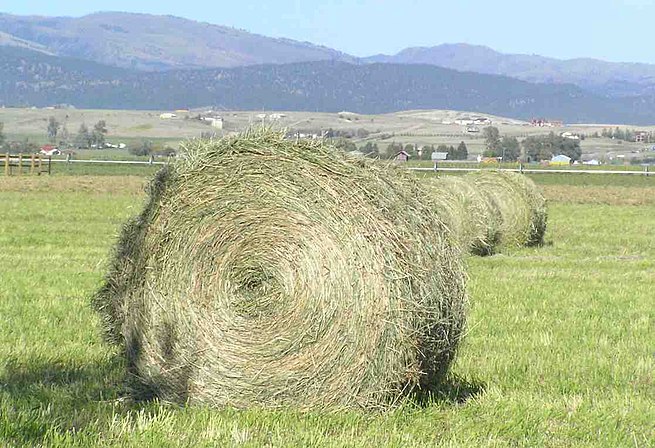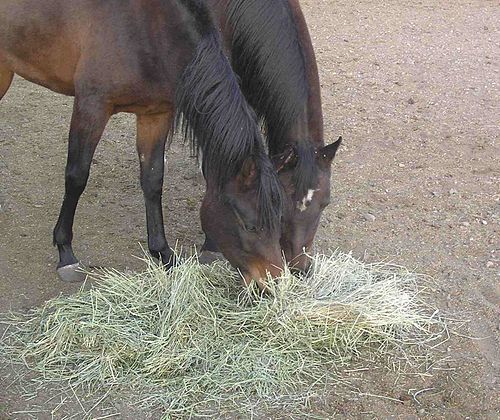Silagenoun
Fermented green forage fodder stored in a silo.
Silageverb
To ensilage.
Silagenoun
Short for Ensilage.
Silagenoun
fodder harvested while green and kept succulent by partial fermentation as in a silo
Silagenoun
grass or other green fodder compacted and stored in airtight conditions, typically in a silo, without first being dried, and used as animal feed in the winter.
Silageverb
make silage
Silageverb
preserve (grass and other green fodder) as silage.
Silage
Silage () is a type of fodder made from green foliage crops which have been preserved by acidification, achieved through fermentation. It can be fed to cattle, sheep and other such ruminants (cud-chewing animals).
Haynoun
(uncountable) Grass cut and dried for use as animal fodder.
Haynoun
(countable) Any mix of green leafy plants used for fodder.
Haynoun
(slang) Cannabis; marijuana.
Haynoun
A net set around the haunt of an animal, especially a rabbit.
Haynoun
(obsolete) A hedge.
Haynoun
(obsolete) A circular country dance.
Haynoun
The letter for the h sound in Pitman shorthand.
Hayverb
To cut grasses or herb plants for use as animal fodder.
Hayverb
To lay snares for rabbits.
Haynoun
A hedge.
Haynoun
A net set around the haunt of an animal, especially of a rabbit.
Haynoun
Grass cut and cured for fodder.
Hayverb
To lay snares for rabbits.
Hayverb
To cut and cure grass for hay.
Haynoun
grass mowed and cured for use as fodder
Hay
Hay is grass, legumes, or other herbaceous plants that have been cut and dried to be stored for use as animal fodder, particularly for large grazing animals raised as livestock, such as cattle, horses, goats, and sheep. However, it is also fed to smaller domesticated animals such as rabbits and guinea pigs.






































